- +212 698 193 183
- info@specialmorocco.com

CloseWelcome

Embrace gourmet majesty and the best mixture of contemporary and historic culture on your 9-day Moroccan culinary tour. Aromatic spices swirl around old cities and create conical-shaped rainbows filled with paprika and saffron. Grapevines spread across the valley into the horizon as camels turn the soil. With herbaceous and dazzling trails from the coastline to the desert, you can engage in epicurean discovery with delicacies that go beyond the kitchen.
Welcome to the cosmopolitan city of Casablanca. Your private transfer will meet you at the airport. As the Atlantic Ocean brushes up against the coastline, it brings in the fresh fragrance of the sea. The minaret of Hassan II Mosque stands almost 670 feet and is the tallest in the world. It is towards the water and can be seen from a distance when wandering the coastline. Casablanca moves with the energy and ambiance of a European city blending with the fascinating flavors and history of Morocco. Wide boulevards are lined with palm trees and stunning colonial architecture. The Préfécture and Palais de Justice on Place Mohammed V are examples of the 1930s Art Deco movement that brought a touch of what locals felt were a modern style to the city.
Listen to the sounds of the city sweep across the neighborhoods, from the Jewish quarter to the plush La Corniche, the seaside neighborhood where people often parade down the esplanade in colorful clothing. The ambiance at Le Sphinx captures a particular timelessness. Located across the street from the Art Deco Rialto cinema you find the café. Waiters dress in black waistcoats and bowties. Local businessmen sip on a beverage known as nus nus, a mixture of half rich black coffee and half milk. The depths of flavors that emanate from the drink are enticing and bring rambunctious energy to the café.
Suggested Accommodation: Hôtel Mövenpick (5*****)
In the morning, you find an array of breakfast offerings that range from traditional Moroccan fare to European delicacies. The aroma of Moroccan tea drifts out of a small glass with decorative etchings. Zatar, an herb known as wild thyme, steeps with green tea and brings pleasurable aromatics to accompany breakfast. Beghrir is a pancake made of semolina and is often topped with melted butter and honey. The savory grain blends perfectly with the sweet, creaminess of the syrup mixture.
After breakfast, your private guide escorts you away from Casablanca and towards the imperial city of Fez. Near Meknes, en route to Fez, you arrive at Volubilis. The site houses the largest and best-preserved Roman ruins in the entire country. You come face to face with 2nd and 3rd-century edifices that housed up to 20,000 people at their zenith, in a land once settled by the Carthaginians. The lush plains roll to the foothills. The main street running northeast is lined with remnants of pillars and the occasional archway, hints at what was once a colonnade.
The Tingis Gate, a tripartite arched entryway stands at the end of the pathway. The aroma of ancient stone blends with surrounding grassland. A 250-foot stretch of mud brick and stone wall stands near the tumulus, a reminder of the pre-Roman city that once stood. Continue onward to Fez and indulge in the succulent flavor of chicken pastille with a pear poached in wine. The courtyard of the restaurant is decorated in imitation precious stones and jewel-toned tiles. The fountain trickles and adds subtle charm to the decadent meal.
Suggested Accommodation: La Maison Bleue (3***)
Meals : Breakfast , Dinner
Wake up and let the sensational fragrance of rich, fresh-pressed coffee help ready you for the day. Breakfast is a collection of dates and grapes; accompanied by the enticing aroma of msemen, square fried dough with a crispy exterior and chewy interior. After breakfast, you venture into the city with your guide to discover the imperial depths of Fez’s medieval history. The medina contains narrow streets that twist and wind in a maze of activity. The marketplace is alive with people, both vendors and buyers alike. Carts are stacked with lemons and oranges. Spices litter the air with powerful perfumes, from nutmeg to cayenne. Kairaouine Mosque is one of the largest mosques. The university was established in the 9th century and expanded in the 12th century.
The surrounding homes are tightly packed against the mosque and obscure the structure’s true size and shape. As you pass by you can glimpse the interior beauty through the main courtyard. The mosque is adorned with a large pyramid roof and graceful minaret. The courtyard is paved with colorful tiles leading past the spritzing fountain to the entryway. As you stroll through the old city, the once faint scent of leather presents itself in full. The famous tannery hides behind a collection of leather workshops. The open space allows you to watch the ancient activity to see the craftsmanship that goes into dying and shaping the fabric.
Suggested Accommodation: La Maison Bleue (3***)
Meals : Breakfast
The city rises with the soothing song of the Call to Prayer. Breakfast has a sweet and tangy flavor emanating from the mixture of yogurt and honey. A nice crunch comes from crushed walnuts swirled into the yogurt. After breakfast, you meet your guide who will take you on a culinary discovery tour of Fez and Morocco as a whole. You meet your chef and are greeted with traditional Moroccan mint tea. The fragrance of spearmint wafts out of the cup along with the steam.
The glass is warm in your hands. You follow your chef through the medina for an experience only a local could provide. Your chef guides you around the marketplace in search of the day’s ingredients, from grains to produce, and an array of spices. When you arrive in the kitchen the chef explains each ingredient’s importance in the dish. The cultural streets around you have made their way into the dishes that you prepare, evolving with time and local preference.
Chef guides you along with each stride and cut, explaining the reason for simple things that create large pleasures. The herbaceous aroma of allspice and coriander becomes prevalent. You realize that through Chef’s guidance you have created three separate dishes with three distinct and delicious flavor profiles, but all uniquely Moroccan. For dessert, you have made a mille-feuille, also known as Napoleon. The sweet, delicate flavor accompanies the gentle sweetness of vanilla and custard, with the slight bitterness of dark chocolate.
Suggested Accommodation: La Maison Bleue (3***)
Meals : Breakfast , Lunch
Relax in the quiet courtyard of your Riad, an antique mansion once home to wealthy and noble families. Indulge the mint and citrus fragrance of your morning tea. After breakfast, your private transfer meets you at your hotel for your journey to Marrakech. Traverse the landscape and arrive at Beni Mella, a city located at the foot of Mount Tassemit. The mountain rises close to 7,400 feet and casts a shadow over the nearby plains.
The city walls were constructed in the 17th century and the Kasbah is set on a bluff overlooking the scenery. The fortress shimmers gold against the surrounding lush trees. The rectangular towers have uniquely crowned corners. The delicious fragrance of figs and oranges drifts from the marketplace. Enjoy a delectable lunch with a view of the central plaza. The city has a slower pace than Fez, which allows you to indulge in your meal and the landscape all around you. You continue to Marrakech and find a city brimming with renowned Moroccan culture.
Suggested Accommodation: Hotel La Maison Arabe (5*****)
Meals : Breakfast
Marrakech embodies the famous culture of Morocco from past to present. Some locals mix their green tea with Sheba, also known as the absinthium for a pungent, aromatic flavor. Sense of direction doesn’t matter and Djemaa el-Fna brims with life. The euphoric sound of the pungi emanates from snake charmers. Fortunetellers predict people’s futures. Storytellers spin tales of treasures and wily princesses. Rooftop cafes look down on the square and provide ample views of life in action. Street theater takes place in all directions and never stops, from the water sellers getting your attention by banging brass cups together, to the mass of chefs that arrive at sundown to grill until the music fades.
Your guide meets you after breakfast and escorts you through the winding streets of the medina where you can allow yourself to get lost in its charm. The Saadian Tombs were constructed in the 17th century and uncovered in 1917. The splendor of the tombs is apparent from before you enter the building. Decorative plasterwork is arranged in honeycomb formations and gilded. Carrara marble supports the Chamber of the 12 Pillars and adds to its shimmering beauty. The mausoleum of the sultan’s mother is located in the courtyard and embellished with poetic carvings of delicate blessings. The flavors of Marrakech differ in how the city’s cultural enchantment is embodied in the food and aromas themselves.
Suggested Accommodation: Hotel La Maison Arabe (5*****)
Meals : Breakfast
The morning is made savory with amlou , a Moroccan spread made with almonds served with bread and cheese or jam at breakfast. After breakfast, your private transfer escorts you into the Atlas Mountains to a Kasbah turned luxury escape. Lavish and lush gardens surround a shimmering pool. The foothills rise and fall, stretching to the horizon. The once imposing and defensive walls of the fortress now look elegant and welcoming. The aroma of cedar drifts along the mountainside. Upon your arrival, your private chef meets you and guides you to your own cooking station. You will once again follow the chef in creating three unique and tempting dishes that range from soups to tagines.
Your lesson may take place on the rooftop terrace with a view of the surrounding Atlas Mountains. The calm breeze returns the scent of cedar. The chef has all the spices and ingredients ready and you quickly follow her lead in creating each flavorful dish. The colors of the spices are vibrant. Each ingredient contains its own texture and aroma. Soon each course is created and you are ready to indulge in your delightful meal accompanied by the exquisite scenery. You simmer the beef in a fruity date broth mixed with honey to create a slightly sweet and completely succulent tagine.
Suggested Accommodation: Hotel La Maison Arabe (5*****)
Meals : Breakfast , Lunch
Breakfast continues to introduce you to new and exciting dishes that help awaken the taste buds. After your meal, you venture out of Marrakech and come to an area between Marrakech and the coastal city of Essaouira. Valley D’Argan is home to a selection of Morocco’s renowned wine. Morocco is the second largest producer of wines in North Africa, standing only behind Algeria. A Frenchman established a vineyard in 1995 to create a French wine established and produced in Morocco. When you arrive, the fertile valley is plush with grape vines. The warm sun hits the vines and starts the winemaking process. You meet your guide and tour through the property.
The aroma of sweet fondant pears and chocolate pastille emanates from the restaurant. The architecture blends Spanish and Moorish elements to create an exotic ambiance alongside the stretch of vines. Camels help turn the soil. The barrels are kept in a cellar and stacked in the controlled, cool climate. At the end of the tour, you taste the wine and find the Heure Bleue Palais has a golden straw hue with rose and lime flower aromas. The spiced honey flavor matches well with the fragrant cuisine to provide a perfect example of how wine and food should be paired.
Suggested Accommodation: Villa Quieta (4****)
Meals : Breakfast
The fountain in the courtyard trickles in the morning air. The misting water helps cool the early sky. The wealth of mint and honey scents emanate from the simmering tea. Relax with the mosaic colors of the courtyard around you and indulge in your final breakfast in Morocco. The brilliant blends of spices create unique and enviable flavors throughout the country. Your private transfer meets you at your hotel. You make your way to the airport and carry traditional and flavorful recipes home with you. Soon you will be able to emulate the captivating aromas of Morocco in your own kitchen, reminding you of the importance of exceptional taste.
Meals : Breakfast
Start your day with a Private Guided Tour at Les Jardin Majorelle, the French painter Jacques Majorelle (1886 – 1962) dedicated forty years of his life to the creation of the luxurious gardens and Berber museum. An amateur botanist, Majorelle included plants from all five continents in the gardens. Marjorelle’s studio, a Cubist style villa constructed by architect Paul Sinoir, has since been transformed into the museum, and is painted a vibrant blue. The garden covers two and a half acres, and was opened to the public in 1947. The garden has been open to the public since 1947. Since 1980 the garden has been owned by Yves Saint-Laurent and Pierre Bergé. After Yves Saint Laurent died in 2008 his ashes were scattered in the gardens. The garden also houses the Islamic Art Museum of Marrakech, whose collection includes North African textiles from Saint-Laurent’s personal collection as well as ceramics, jewelry, and paintings by Majorelle.
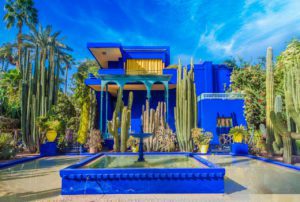
A private visit to the home of the late Yves St Laurent, the Villa Oasis. Yves saint Laurent travelled here each year to gain inspiration for and design his future collections. These inspirations saw him pay tribute to artists in his haute couture collections with the famous Mondrian dresses, then in 1966 with the pop art dresses and in 1967 with his major homage to Africa. In the 1970s he presented his Picasso and Diaghilev collections and tributes to Matisse, Cocteau, Braque, Van Gogh, Apollinaire in the 1980s.
After his retirement Yves Saint Laurent devoted his energy to the activities of the Foundation Pierre Bergé-Yves Saint Laurent, with the mission is to conserve 5,000 haute couture garments and 150,000 accessories, sketches and other objects making up the collection, to organize thematic exhibitions on fashion, painting, photography, the decorative arts, etc., and to support cultural and educational activities.
The Villa oasis still houses many of these collections and this a rare opportunity to gain insight into the extraordinary talent of the designer. The fee for the visit is a direct donation to the foundation to ensure future talents both in Morocco and abroad.
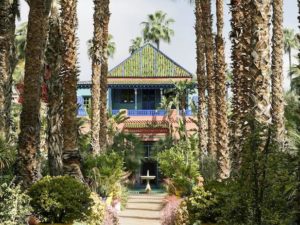
Enjoy a hosted visit by the gallery representatives & curators of the Maison de la Photographie of Marrakech is a courtyard mansion and is a private foundation created by Hamid Mergani and Patrick Manac’h in 2009.
Designed to create an archive of and showcase the diversity of Morocco as it was seen by those who visited it, anonymous travelers or famous photographers, over the last 150 years or so. Of visit is the documentary on Berber life by Daniel Chicault, shot 1956, runs on a loop on the second floor.

Rocco Orlacchio of Voice Gallery offers a private showing as well as a visit to the Atelier of a well renowned Artist in Residence Eric Van Hoven. Rocco sits on the board of the Marrakech Biennale and is the prefect ambassador to shed light on the Moroccan art scene. Voice Gallery showcases local and international, mainly young artists, who come together create and collaborate with each other, extending boundaries and exchanging ideas annuitizing the culture and landscape of Morocco to inspire their artistic endeavors.

An artist’s retreat with a difference, Al Maqam is in the village of Tahanaout in the lower reaches of the snow-capped Atlas Mountains. Al Maqam means ‘The Place’ in Arabicand it serves not only as an artist’s colony but also as gallery, library and a place to stay. There is nothing else quite like it in Morocco.
The painter Mohamed Mourabiti has been setting up Al Maqam for over a decade and now, carefully installing traditional home-wares and local paintings and now photographers, writers and artists flock to the centre to share ideas and inspiration.
On average 100 international artists are hosted a year, and there are regular guests like the painter Abderrahim Yamouand the French writer Michel Butor.
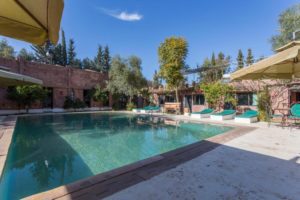
Calligraphy means “beautiful writing” and Arabic calligraphy (or more properly, Islamic calligraphy) is considered a high art form in the Arab world and is increasingly gaining recognition and appreciation worldwide.
Abdeljalil conducts calligraphy workshops to share his passion with others. Whether you ask him about history or more practical information such as the ink or the pens, he will not skimp on precious information that may just leave you speechless. Patient and devoted, he will also teach you how to write the alphabet, your name and help you become familiar with calligraphy. After all, his life motto is “Make a living from a passion”.
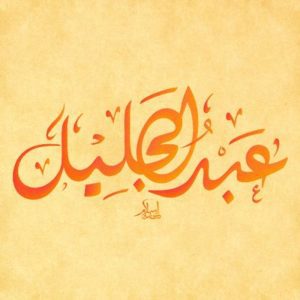
The philosophy is to connect you authentically to the culture, through a tasting trail that is able to deliver through insider culinary access, allowing you to experience the heart of Moroccan culture at its source.
Join local Moroccan foodie experts who are passionate about sharing their culture and culinary expertise with you. The three-hour tour will guide you through the meandering streets of the Medina and Kasbah. Here you will discover mouth-watering delicacies that most travelers would not have access to. En route, you’ll experience a wide range of tastes, a variety of active ancient communal cooking facilities, and the how’s and why’s of food sourcing and preparation.
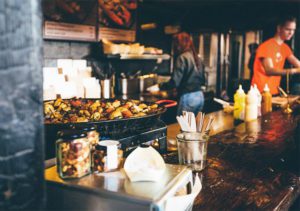
Private Cooking Lesson is at Le Maison Arabe. The workshops are conducted by a dada (traditional Moroccan cook) or a chef from our Moroccan restaurant, using easy-to-use modern equipment found in everyday kitchens. At the end of each workshop, participants dine on the meal they have prepared. At a typical half-day workshop, one learns to prepare an appetizer and a main dish, or a main dish and dessert.

The cooking class takes place in the Amizmiz Valley, populated by Berbers who still stick to their traditional way of life. Just a short ride from Marrakech this valley has been little affected by tourism. His elegant eco-farm is set amongst 15hectares of olive groves, vegetable gardens and orchards in a traditional Berber hamlet with the imposing silhouette of the High Atlas Mountains dominating the landscape. He will teach you how to utilize herbs and spices as well as prepare a typical Moroccan meal including bread making Moroccan style
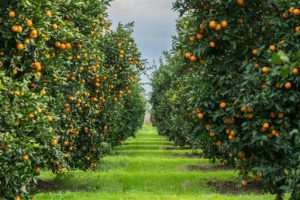
Tasting Marrakech is a tailor-made food and cultural experience that takes place in the famous Jemaa el Fna square in the company of a state-approved guide and a foodie expert. The tour is private and customized to your appetite and palate. Dine with the locals while sampling regional specialities at the most popular food stalls in the market while soaking up the night-time ambiance in the famous square.
Once you have had the opportunity to try the various street foods, we then take over a local restaurant close to the Jma El Fna and re-create what we’ve tried en route!

Spend some time in a small village and experience the countryside first hand. Learn some of the daily tasks from baking your own bread, learning to make your own tagine, cooking on coals, milking the goats, going for water at the well and making mint tea.
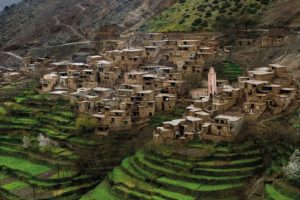
Start your day trip with a wine degustation at Val Du Argan, one of the leading wineries in the south of Morocco.
Moroccan-French born Charles Mélia, owner/winemaker, moved to France to manage his family’s property in Cotes Du Rhone at young age before turning back in his late 40’s to make wine in his motherland. His vineyard began with five tentative hectares planted in 1994 and now extended to 40, and still remains the only winery situated on the southern coastal part of Morocco. His boutique wines are now a reference point for the Moroccan wine industry.
Following the wine tasting stop en route for a cheese tasting and lunch at La Fromagerie where Jaouad Hbib and Abderrazzak Khoubbane run a seriously good dairy. The cheeses are made from old Berber techniques and each cheese reflects the unique vision of the farm in offering bio-made produce at high quality levels.
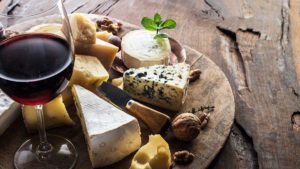
Ride a vintage side car through the lively alleys of the medina, venture across the mythic palm grove and encounter small villages or rally the ville nouveau, whichever your choice this is a fun and exciting way to explore a secret Marrakech not normally accessible on foot. Our rides start from 1.5 hours through to half or day tours and we’ll tailor make the experience to you! Your motorbike will be either a Ural, an authentic Russian knock off of the 1938 BMW R71 or a Mash and seat 1 driver and up to 2 passengers per bike, one on the back, one in the sidecar – but whichever seat you’re in you’ll discover Marrakech from an unusual point of view”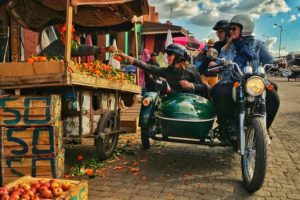
Drift gently over the fantastic desert landscape and capture the sunrise while floating over secluded Berber villages and the snow-capped Atlas Mountains on this magical balloon flight. Rides are available with groups or can be arranged privately with champagne breakfasts following the flight for that extra special occasion.

Adventure and fun at its best – half day of dune bugging in the oasis palmary of Marrakech. Enjoy a relaxed introduction to quadding alternating the soft, dried silt plains of the palmgrove with simple river crossing (in case of rain) and winding trails through lunar landscapes on the outskirts of Marrakech. Catered for beginner to experienced riders we can adapt the level that’s right for you. Choose from shorter rides through to half or full day excursions on the latest Quads and buggies.

Enjoy a fantastic experience with gentle and well-trained horses riding through the local Berber Villages. All levels are catered for as the guide will adapt to your riding experience.
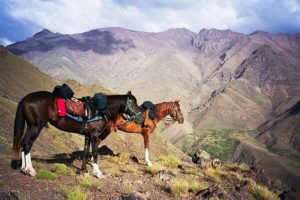
Only an hour south of Marrakech, the Mizik Pass is a wild and totally undeveloped crossing between two populated valleys situated within the Toubkal National Park at nearly 2000m above sea level. A steady hike up through juniper forests offers spectacular views over the Berber dwellings of Imlil, the Tamatert Pass and up to the Tacheddirt Pass and the top of the ski slopes at Oukaimeden, the highest ski resort in North Africa. On your descent you’ll start to experience the villages in the picturesque valley of olive groves where the rapid change in vegetation creates vibrant strips of cultivation close to the water source.
A picnic lunch will be freshly prepared for you at AzibTamsoult – a cluster of shepherd huts used by villagers and their flocks during the summer period. From here you’ll walk on a network of picturesque paths through the village of TiziOussem and down towards the village of Aid Aissa.
Today’s hike takes around six hours of walking to arrive at your final destination of Imlil at the base of the National Park and foothills of the High Atlas Mountains.
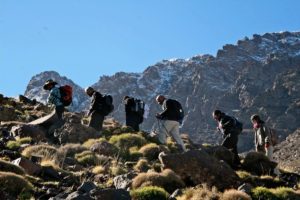
The Moroccan tradition of Hikayat, or storytelling dates back almost 1, 000 years. Some stories were recorded and other stories are passed orally. This form of entertainment was found in cities throughout Morocco but today Marrakech’s Jemaa El Fna square is the only city that’s keeping this tradition alive. This evening enjoy a private session of this dying artin the comfort and peace of your hotel with the master Storyteller Ahmed Ezzarghani in both Arabic and English before dinner.

Whether it’s a romantic ride or fun for the family Caleche horse drawn carts are a great way to see the city, particularly at sunset when the colors against the red ochre change dramatically. Tours can include the medina remparts, Agdal or Marjorelle gardens and even the palmeries where a delicious evening dinner picnic can be arranged amongst an exotic backdrop.
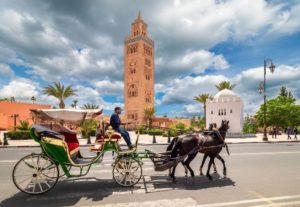
Unlike the dunes of the Sahara Desert which take hours to reach, the Agafay with its stony hamada style desert offers a stunning landscape to relax, unwind and watch the setting sun – you’ll feel a world away from Marrakech even though it’s only a 45-minute drive. A gorgeous dinner in a camp setting with traditional musicians and campfires, overnight stays and daytime activities can all be arranged for those seeking a desert like experience without the long travel.
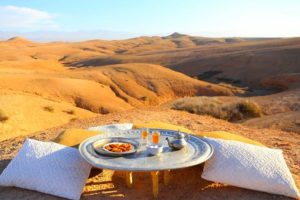
A perfect way to unwind after a day of sightseeing, Les Bain des Marrakech is one of the first private Hammam’s in Marrakech and remains one of the best. Located in the medina from the moment you arrive when exotic scents fill the air, you’ll be pampered and made to feel like new with their sumptuous spa and massage packages that range from basic through to the ultimate luxurious spa experience.
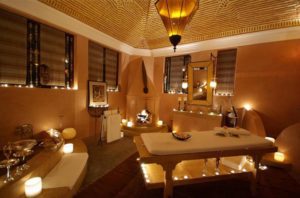
Head this morning to visit the village of Imlil at the base of Jebel Toubkal. Choose to explore on foot or by mule to visit some of the surrounding Berber villages to look at some of the working co-operatives. These co-operatives, set up through independent and government funding allow the women of the region to support themselves and be sustainably independent, as well as providing the opportunity for literacy education. Experience traditional rural life with local women and roll your own Couscous then enjoy the meal that you will all share together in a true Moroccan style.
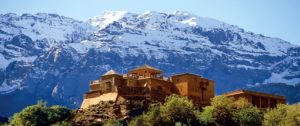
A perfect way to unwind after a day of sightseeing, Les Bain des Marrakech is one of the first private Hammam’s in Marrakech and remains one of the best. Located in the medina from the moment you arrive when exotic scents fill the air, you’ll be pampered and made to feel like new with their sumptuous spa and massage packages that range from basic through to the ultimate luxurious spa experience.
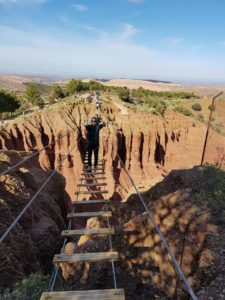
Earlydeparture from Marrakech heading to the direction of Damnate and its beautiful fields of olive trees. After driving towards the natural bridge of ImiNifrid you will stop for a mint tea and enjoy the view. All this road is unique by its greenish valleys and amazing scenarios. You will have plenty of chances of taking photos. Visit of a traditional water mill in the region. Berber lunch near the waterfalls. Return to Marrakesh in the evening after a wonderful day out of Marrakech.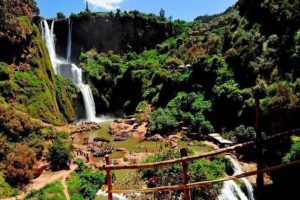
Situated on the Atlantic coast 2.5hrs from Marrakech is the laid-back fishing village of Essouira, famous for its Gnaoua music and artistic scene. Many local and foreign artists have settled here continuing the vibe that attracted visitors such as Jimmy Hendrix and Cat Stevens (Yousuf Islam) in the 1960’s.
Once an old Portuguese fishing village, Essouira is a perfect place for those who wish to wander the souks for wooden carvings that it is famous for, to stop and enjoy fresh seafood and local wine whilst watching the fisher men come in with their daily catch. For a more active alternative the kite and board surfing is excellent here and there is horse riding, camel riding and golf available. 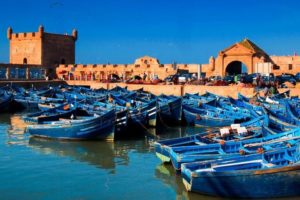
Experience the energy and essence of Fez as it comes to life after dark. Fez by Night tour reveals the captivating appeal of the medina and Ville nouvelle, and the vibrant life that exists within this traditional city. Start from Bab Boujloud, to the Jewish Mellah and through the gold souks to the Kings Palace. Promenade along the boulevards discovering the famous fountains of Fez and soak up the festive atmosphere of Fassis enjoying their own city after sunset.

Lose yourself in the gardens of ancient palaces and exotic Riads perfumed with orange blossoms, citrus, blood red roses and the sweetest jasmine. The tour combines an overview of the fascinating and beautiful world of Moroccan Architecture which showcases all the main ornamentation and decorative techniques from floral motifs, geometry, ceramics to calligraphy, symbolic of the rich cultural heritage of the vast Islamic empire and uncovers the mysteries of the Islamic concept of Chahar-bagh, the four-fold garden and leads us to discover earthly paradise revisited.
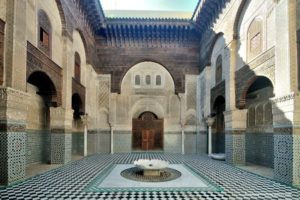
This morning enter into the depths of the tanneries, observe weavers at their loom, engage with the copper workers employing traditional design techniques and discover hidden workshops where generations of artisans ply their individual trades and adapt century old techniques to a modern market. This artisanal tour is designed to give you an overview of production methods and step by step explanations as you go beyond the traditional medina tour to delve deeper into the world of the artisans of Fez. Meet the artisans themselves as you gain firsthand knowledge of the materials and the processes involved in their daily work. The tour finishes with a visit to Fez’ new artisanal school and exhibition gallery
Morocco is home to one of the oldest Jewish communities in the diaspora. It dates back to 2000 years. Its singular Jewish culture is the result of a fusion of varied traditions including Berber, Herbatic, Andalusian, and Arab influences. Fez, the spiritual and cultural capital of Morocco par excellence, leaves its visitors with a unique experience. Fez is the home of Al-Qarawiyeen University the oldest one in the world, where the famous Jewish philosopher Maimonides (Rambam) studied. It is also where the first Mellah, Jewish quartier in Morocco, was established in 1438. This journey to Jewish Fez takes us into a history that shaped Sephardic Judaism, visiting its synagogues, cemetery museum, and taking a walk in its street that once witnessed the presence of the Jewish families and grand rabies, will remind us not only of how Moroccan life was/is like, but also of how was Jewish life in Spain before the expulsion of 1492, as Fez was destination of many of those Jews. Today there is still a small, but vibrant, Jewish community in Fez with a functioning synagogue, kosher restaurant and a community center.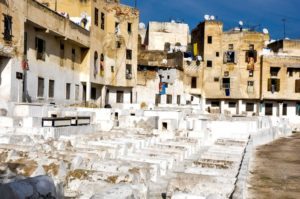
Morocco is a place where music plays a large part in celebrating religious festivals, marriage and birth. Drums are seen and heard everywhere in Morocco and Fez is the place to make them.
We invite you both to spend a morning in a typical Fondouk(traders workspace) under the watchful eye of a drumming artisan teaching you how to make your own drums. You choose the sound of drum you prefer, pick out the skin, stretch and string your own instrument before painting it in your very own individual design. Finally a professional drummer will teach you how to play the drum Moroccan style so you can impress family and friends on your return. 
One cannot but help notice the different fashions that adorn the streets of the medina, from the western style dress to the more traditional kaftan style jelabas worn by men and women. This afternoon you will be accompanied by a seamstress through the dress makers’ souk to choose a celebratory kaftan design. You will need to select your materials, threads and beads from the vast array available in the souk and with your design prepared, have the perfect his and hers kaftans made for you – ready for collection the following day!

Dance is integral to the culture in Morocco, far more so than it is in the West. Both men and women dance, but it is mainly something done by women. It’s a way of women sharing and being together, and displaying themselves in public in a way they don’t usually do in ordinary life. It is joyous, sensual, and energetic, and is performed mainly at weddings, parties and rituals such as circumcisions and baby naming ceremonies. At these gatherings the women wear beautiful dresses when they dance; long, flowing and colourful, with belts around their waists. Moroccan dance includes aspects of Middle Eastern belly dancing – rotating the stomach is a common element and other styles such as Gnawa (an African ethnic group who became part of the Sufi order in Morocco), where the movements involve jumping and hair tossing and tribal dances from the Amazigh (Berber) regions which vary widely.
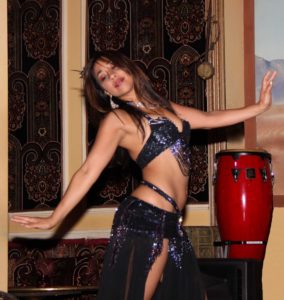
In this modern age of new world cosmetics we invite you into the world of ancient beauty secrets and where it all began. Participate in a 5 hour workshop that unearths traditional methods and natural beauty products that can easily be made in your own home by yourself or with friends. Start your day by shopping at the souk el henna to purchase ingredients and gain an overall explanation of the products that can be made from each one. We move on to our workshop, in a Moroccan Dar on the rooftop terrace, a space traditionally reserved for ‘women’s businesses. Sip Moroccan tea as you learn how to make and blend your own rhassoul and we take you through the traditional products including Argan oil, sabun bildi and eau de fleur with step by step instructions so that you understand the properties of the ingredients, how and why they are used and the benefits they each provide. We finish off the workshop with a visit to a medina hammam so that you can employ the techniques that you have learned and absorb yourself into the rituals and culture of the local Moroccan women

Experience a unique opportunity to connect with locals and be absorbed into Moroccan culture through a visit to one of the traditional hammams in the Fez Medina. We provide a local escort who explains the history, traditions and products and guide you through the steps of this ancient practice. Perhaps finish the day with a “Henna tattoo” for her and “close shaving” for him.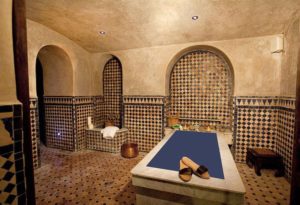
More than traditional Moroccan cooking, this class is a complete immersion into the Moroccan culture and family life. Spending time with our lovely local family in their beautiful riad, you will be encouraged to fully take part in the daily activity of shopping and preparing for a delicious traditional meal. This unique experience will take you to the local medina souk, the bread you make will be baked at the local faran, and your delicious feast will be shared with the family Moroccan style.
Your lesson will entail, shopping for seasonal vegetables and fruit, preserving lemons, making traditional Moroccan salads, bread-baking and the art of making the perfect mint tea – what you make will depend on the seasonal produce and can be decided on prior to your souk visit.
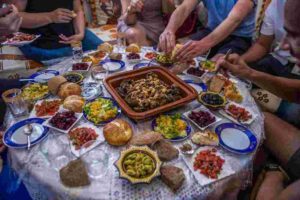
Find your way through the streets and souks with a local Fez food expert. Start by exploring the fresh food souks, then on to the honey souk to taste an array of delicious honeys, their flavours and properties and find out why honey is so important in Moroccan cooking and Islamic culture. From the honey souk, visit traditional farnatchis, the spice El attarryia and the henna souk. Try traditional Moroccan foods including dried meats, milawi, harsha, briwats, spicy sardines, and fresh goat cheese, finishing off with a visit to a traditional Moroccan tea house.
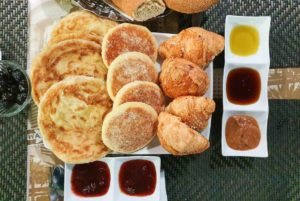
Indulge your sweet tooth and learn how to prepare Moroccan patisseries as well as discovering this important cultural practice. A Moroccan feast is not complete without sweets; in particular, patisseries play an integral role in everyday life in Fez. The ancient city is famous for its diverse and traditional sweets with a multitude available every day at the local souks. Spend the day with a Moroccan family to prepare 4 to 5 different traditional Fassi Moroccan sweets.

Here we begin to head away from Fez and out East to Ribat El Kheir. Enjoy the beautiful scenery of the Atlas foothills en route to get to the town surrounded by mountains and lush agriculture.Start learning the secrets of a good Moroccan couscous while at the same time experiencing traditional rural life. Visitors roll their own couscous from scratch with the women of the association and then cook and eat it for lunch. After lunch take a walk along the ridge to see the donkey-powered olive press and have mint-tea and an olive oil tasting with the owner. In the afternoon head back to Fez.
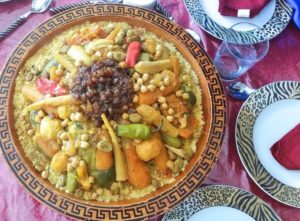
Depart Fez for the Middle Atlas Mountains to visit one of Morocco’s leading boutique fromagerie’s, La Pommerai. The private property is one of the first to be officially certified organic in the region and is set against a backdrop of apple and orange orchids. Taste exquisite, hand-crafted and artisanal cheeses and olive oils which are cold pressed as well honey raised and processed into a variety of pure honey. Here we’ll have a Dada on hand (female cook), who’ll be teaching us how to make khobz(Moroccan bread) in a traditional clay faran. A delicious meal of farm produce will be served, along with our own homemade breads and the local cheeses.

Mount Zalaghs’ peaks and slopes can be easily seen from Fez Medina and yet whilst only half an hour travels by car, the tranquillity and natural beauty of Mt Zalagh is a world away from the bustle of Fez. Short treks will take you through surrounding forests of pine, cedar, fig, almond and olive orchards to visit local homes and farmsteads. Here you will experience not only the warmth and friendliness of this mountain people, but also see the beauty and simplicity of the traditional Berber adobe/pise architecture. A picnic lunch will be provided, Berber style, and we have no doubt that this will prove to be a most memorable excursion to a world so near and yet so far from the Medina of Fez.
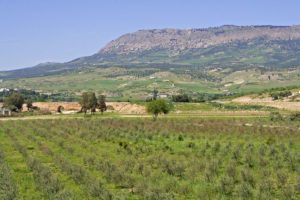
This morning depart for Fez via Moulay Idriss and the ancient Roman ruins of Volubilis, a day spent in the past, seeing ancient architecture and eating age old recipes, a feast fit for Anthony and Cleopatra themselves! Find beautiful mosaic floors, uncovered and brought to light by the archaeologists that work this partly excavated site. It was developed from 3rd century BCE onwards as a Phoenician and later a Carthaginian settlement. The town fell to local tribesmen in 285 and was never recovered by the Roman Empire. Constantly uncovering this city beneath the sands of time, now exclusively a Moroccan project runs by Moroccan archaeologists. Following a tour of this stunning historic site from the 3rd century BC and its many intact and colourful mosaics, enjoy the tranquillity of a local farm in the shadow of the ancient ruins while sampling traditional Roman recipes as recorded in the Latin texts of Apicius and Cato.
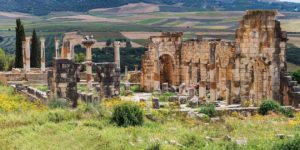
This morning cycle towards Bhalil, a tranquil town is located at the foot of the Jebel Kandar which offers visitors spectacular views of the town and the landscapes surrounding it and is most notably known for its modern day cave dwellers. (Option exists here of organizing morning tea with locals). From Bahlil we move on to Immouzer, particularly beautiful in spring with apple blossom and a lively place to be in July with the Pommes de Fete. Becoming increasingly known as a region for cheese production we’ll stop off at La Pommeraie. The private property is one of the first to be officially certified organic in the region and is set against a backdrop of apple and orange orchids. The cheeses here are exclusive to Morocco’s leading luxury hotels & restaurants. Here we’ll sample the cheeses and enjoy a BBQ lunch before setting back to Fez.

The Middle Atlas region offers many hidden delights including spectacular views of cedar and cork forests and delightful & hilarious Barbary apes. A short hike into the cedar forests with a mountain guide to participate in the Monkey Watch programme. Enjoy the crystal air of the mountains while you discover the rustic Berber towns of Immouzer, Ifrane and Azrou.
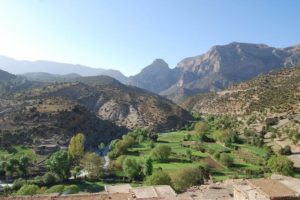
info@specialmorocco.com
07 rue Tarablous, QI 80000
AGADIR, MOROCCO

Morocco is one of those types of destinations that can be visited year-round. You have to understand the geography of the country in order to choose the best time to visit Morocco. Taking into account that you have vast desert regions, probably those should not be visited during the peak summer months such as July and August.
Also, knowing that Morocco has most part of its territory with mountains above 10.000 feet and up to 14.000, you will surely encounter snow in highlands above 4200 feet. So, expect snow during the months of November until February. Overall we can say that Morocco is amazing and can be visited from January until December, but the ultimate best times to visit Morocco are during April, May, September, October, and November.
Tourists have been visiting Morocco for years and Moroccans have well-earned reputation for warmth and kindness toward visitors. Moroccan cities are generally very safe, especially in area where tourists frequent. Morocco is very well secured, Police in every location, there is so many checking points, this is what makes Morocco safe and 100% secured to make sure everybody are safe and comfortable in Morocco. Morocco generally has a very low crime rate. Travelers will be safe in Morocco if they take sensible precautions that would apply to any tourist destination around the world.
Travel insurance should be obtained before leaving your country of origin. It is not compulsory to purchase it. Local hospitals have limited diagnostic capability. Private clinics can be expensive, evacuation can cost a lot, luggage can disappear, so insurance is a good idea.
You can relax and wear whatever is familiar, comfortable, and best suited for you during your holidays. Morocco is very tolerant and welcoming to visitors, and you’re not expected to act or look like a Moroccan. Longer shorts and shirts are fine for men. Concerning women, it’s a good idea to bring a scarf to cover bare shoulders and arms in rural areas.
It’s not easy to get Moroccan Dirham outside the country as it is a closed currency. Those who succeeded have paid heavy commissions for banks.
There are ATMs everywhere in the country, exchange points, banks, and many businesses/shops/restaurants nowadays accept cards mostly with a 5% transaction fee. The best place to exchange money with high rate is the touristic areas.
The Moroccan Dirham (MAD) is the currency of Morocco. Made up of 100 centimes per unit, the currency is issued by the Bank Al-Maghrib (Morocco’s central bank). Historically, the Moroccan Dirham originates from the Byzantine Empire’s Drachm, and was used in Arabia and the Levant in pre-Islamic times. The name “Dirham” stems from the Roman word “denarius” .
Credit cards are widely used in Morocco in hotels, many shops, restaurants, and cafes. Most stores in markets accept credit cards. The most common types of credit cards used in Morocco are Visa, Master Card, and American Express.
Visitors to Morocco must have a passport valid for at least 6 months beyond the scheduled return date to enter Morocco and you can obtain a visa from Morocco Consulate before departure. Also, entry visa is available upon arrival Morocco airports against USD 27 per passport for specific nationalities and need to check before.
Some nationalities don’t need a visa to visit Morocco for the purpose of tourism for up to 3 months such as United States of America, Canada, United Kingdom, Australia, Denmark, Netherlands, New Zealand, and Switzerland. For more info and details on entry visa to Morocco please check with the Moroccan consulate or embassy at your country
It is always recommended for travelers who wish to have their own supply of cigarettes and alcohol with them in Morocco to purchase them upon arrival.
There are duty free shops in the airports in Casablanca, Marrakech, Agadir, Fez, Tangier and Rabat. Tourists are allowed to purchase up to 3 liters of alcohol and up to 200 cigarettes on arrival.
English and French are studied in school all over Morocco. This is why most Moroccans, who live in the cities, speak or understand at least some English words or phrases, and most of Moroccans are speaking French well. Fewer Moroccans can speak Italian, Spanish, and German; however, professionals in the tourism sector are accustomed to visitors who cannot speak Arabic. They speak enough English and many other languages to fulfill the needs of most travelers. Many travelers enjoy their stay in Morocco without learning a single word of Arabic; however, it is always good to learn a few Arabic words to expressing greetings or thanks. If you are planning to visit some places other than popular tourist destinations, it is advisable to learn some Arabic phrases. Generally, Moroccans are friendly and are happy to help anyone, especially foreigners and tourists, even if there is a language barrier.
Many people in the tourism sector depend on tips, as a major part of their income. Therefore, tipping is considered customary in Morocco. It is a customary attitude for expressing ones satisfaction of good services rendered to him by staff on duty with him. We advise if you are willing to offer it, this would be great and if not, you are not obliged to do it.
– The same as many hotels all around the globe, the check-in time in most hotels in Morocco is around midday, 1 or 2 PM. If you arrive in the hotel late at night or in the early morning, you may have to pay for an extra night to get to your room immediately without having to wait until the normal check-in time.
Accommodations for travellers in Morocco fall across a broad range—everything from world class luxury to simple hostel accommodations are available. The nicest hotels compare well with luxury hotels anywhere, coming from international hotel chains like Movenpick, Hilton, Four Seasons, and Sofitel. A step down from these is a variety of local hotels that ranges from luxurious to simple. Moroccan hotels have their own rating system that loosely classifies them on a 5-star scale; however, this scale is different from international standards used elsewhere.
Moroccans are well known all over the world for their tolerance and hospitality; however, it is always polite to ask permission before taking a photograph of people, especially women, and stores or products. Photography is non-permitted around army bases, airports, dams and bridges. In most places where photography is prohibited there will be signs to notify you.
Non-Muslims are generally welcome to visit and access Hassan 2 mosques in Casablanca except when they are being used for prayer, on Friday and during the five prayers of the day. Tourists are not allowed to enter any other mosque at any time. Only outside visit is possible.
Most of the monuments, historical sites, and museums in Morocco open from 9 AM until 6 PM. During Ramadan, the holy month of the Islamic calendar, be aware that these hours will change significantly.
Most of the shops in Morocco open from around 9 AM and stay open until 10 PM; however, many shops, cafes, and restaurants especially in main cities like Marrakech, Casablanca, Fez, Agadir, and Rabat stay open much later and some facilities and shops are open 24 hours a day in touristic areas. During Ramadan, the holy month of the Islamic calendar, opening hours may change significantly with shops closed during the middle of the day and staying open much later. Medina Souk in Fez closes Friday Morning.
There is a public transit system in Morocco that uses a rail to link the main towns and buses for inner-city trips. Small private and group tours will typically use large vans and sedans. Medium to large motor coaches is used for larger group holidays.